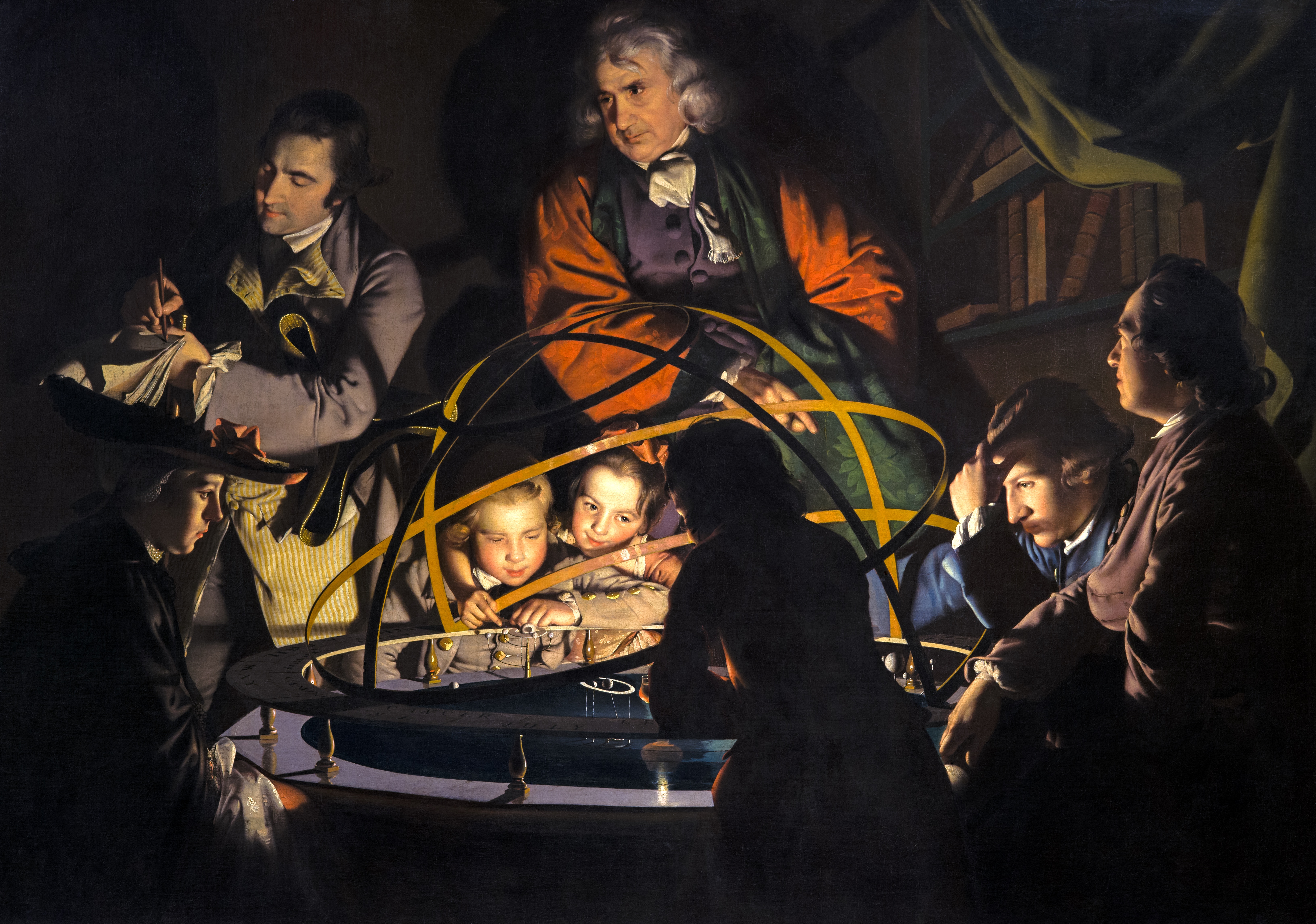
oil on canvas
1473 mm × 2032 mm (58 in × 80 in)
Wikimedia Commons
A Philosopher Lecturing on the Orrery, full title A Philosopher giving that Lecture on the Orrery in which a lamp is put in place of the Sun, is a painting by Joseph Wright of Derby depicting a lecturer giving a demonstration of an orrery[a]An orrery is a clockwork model of the solar system. to a small audience. It was first exhibited in London in 1766.[1]
The Orrery was the second of Wright’s candlelit masterpieces. The first, Three Persons Viewing the Gladiator by Candlelight, was painted in 1765, and shows three men studying a small copy of the “Borghese Gladiator”. It was greatly admired, but The Orrery caused a greater stir, as it replaced the classical subject at the centre of the scene with a scientific one.[2] Wright may have been inspired by his having attended the presentations of James Ferguson, a travelling science lecturer who visited Derby in 1762.[3]
Composition
Wright’s depiction of the awe produced by scientific “miracles” marked a break with previous traditions in which the artistic depiction of such wonder was reserved for religious events;[2] to Wright, the marvels of the technological age were as awe-inspiring as the subjects of the great religious paintings.[4] But more than that, the domestic setting seems to suggest that natural philosophy – what we would today call science – is open to all, “men and women, young and old”.[5]
The lamp representing the Sun allows Wright to make extensive use of chiaroscuroTechnique used in the visual arts that makes use of light and shadow to define three-dimensional objects and surfaces. for dramatic effect,[4] and the shadows cast on the observers’ faces can be seen to correspond to the phases of the moon: new moon, half moon, gibbous moon and full moon.[6]
Provenance and portraits
Figures thought to be portraits of the mathematician and artist Peter Perez Burdett and Washington Shirley, 5th Earl Ferrers, a keen amateur astronomer, feature in the painting.[7] The picture may have been painted speculatively in the hope that the Earl would buy it, which he did;[8] it is now in the Derby Museum and Art Gallery’s collection.[1]
Benedict Nicolson, in his 1968 biography of Wright, argued that the clockmaker and scientist John Whitehurst was the model for the lecturer;[9] another commentator has observed that Wright “appears to have modelled his philosopher on [Isaac] Newton”.[1]
